
You are not the first person to wonder about how to set your freelance rates, and I am not the first to write about it (scroll to the resources section at the bottom to see all the research that other, more curious freelancers have conducted).
Money is a huge topic in freelancing, because pay is too often volatile and bewilderingly skewed. When I started freelancing in 2014/15, I made $20/hour doing content coordination for a marketing agency. For a while, I averaged $400/month working part-time with a SaaS. Today, I work under a company with long-term retainer clients. For the last two years my month-to-month gross has often hit five figures in billables.
So today let’s talk about different ways to set your freelance rates, and the pros and cons of each.
Different ways to set your freelance rates
It’s hard to know how much to charge these days, and what format to charge in. Do you want project pricing, retainer pricing, time-based estimates, or do you want to charge by project?
Option 1: Hourly
Hourly pricing is when you charge based on how much time it takes you to complete a task. Often, freelancers who charge hourly rates also utilize some sort of timer that can help them automate time-tracking and invoicing.
Time-based pricing is good for roles that will require fluctuating tasks. For example, a growth marketer may have various different projects, and even some unexpected tasks to tackle in-between work.s
Pros
- Easy to track
- Straightforward billing
- Ensure you’re paid for all your time
- Sometimes easier to close deals ($100/hour vs $6,000 project)
- No need to worry about scope creep
Cons
- Must track time, adding another task to remember
- Less potential for revenue (your time is limited)
- Pay may not reflect the true value of your work
Option 2: Retainer
Some retainers fall under the time-based method because you tend to estimate retainers based on how many hours per month you expect to work for a client. However, I think they are different enough to merit a separate option.
Retainers are when freelancers have an ongoing engagement agreement with a client. These engagements can for a certain amount of deliverables (ex. four articles per month) or a certain number of hours of work (ex. 10 hours a week).
Pros
- Reliable income
- High client retention rates
- Long-term client relationship building
- More in-depth knowledge of the business
Cons
- Locked in to clients for a contracted period of time
- May need to avoid business from competing companies
- Must be wary of scope creep, even if you’re interested in the additional work
Option 3: Project-based
Project-based pricing is good for contracts where you have set deliverables that are reliably uniform. One example of this is editing an eBook, wherein once the eBook editing is done, the project wraps and you have no further work.
You can also generate project-based estimates by gauging the time you expect it to take for you to complete a task, then use your hourly rate to find the total.
Pros
- Clear and easy start and end dates
- Can take on projects that interest you on a case-by-case basis
- More flexibility in your scheduling, and easy to take breaks as-needed between projects
Cons
- Can feel unreliable (always need more projects in the pipeline)
- Requires more context switching hopping from project to project
- Lower client retention rates than retainer
Option 4: Value-based
Value-based pricing comes into play when you’ve been in the industry or your trade for a long time and are an expert in your field.
For example, it might take an experienced writer 30 minutes to create better work than a newbie would deliver in 3 hours. The experienced writer should charge for the value of the piece, not the time it took them to write it.
Pros
- More potential for revenue
- Avoid a “race to the bottom” in price
- Differentiate yourself from competitors
- Builds off merit, experience, accolades, and other achievements or knowledge that continues to grow throughout your career
Cons
- Clients may see it as less measureable
- May be harder to sell higher rates
Option 5: Commission
Commission agreements are great for projects with high return potential, such as ad copy (where your client has a clear way to measure results) or landing page copywriting.
So you might say, for example, a client needs to pay you 5% of ongoing sales that result from the ad you wrote.
Pros
- Can get paid indefinitely
- Generates compounding returns the more work you deliver
- Easier to sell, as your fee is anchored on client revenue from your work’s performance
Cons
- Returns not guaranteed
- May be difficult to ensure clients pay accurately
This isn’t an exhaustive list of different ways to price your offerings, but it’s a good place to start. You can mix-and-match what you like, for example doing value-based retainer pricing. Or having a retainer and set amount of deliverables that you’re paid on commission for.
Resources

Below you’ll find links to research available about freelance rates compiled by teams with more patience than me. Most of them help with setting your hourly rate, but you’ll also find project rates and annual salary information (which you can use to reverse engineer what a monthly retainer might look like).
Contractrates.fyi
View either hourly or contractual rates for roles of your choice, alongside how many years of experience a contractor had under their belt to get to that pay level. Each search result also comes with a summary, stating average hourly rate, day rate, and salary worldwide for a role. They also note the best (and worst) country for freelancers in that field, determined by highest average hourly rate.
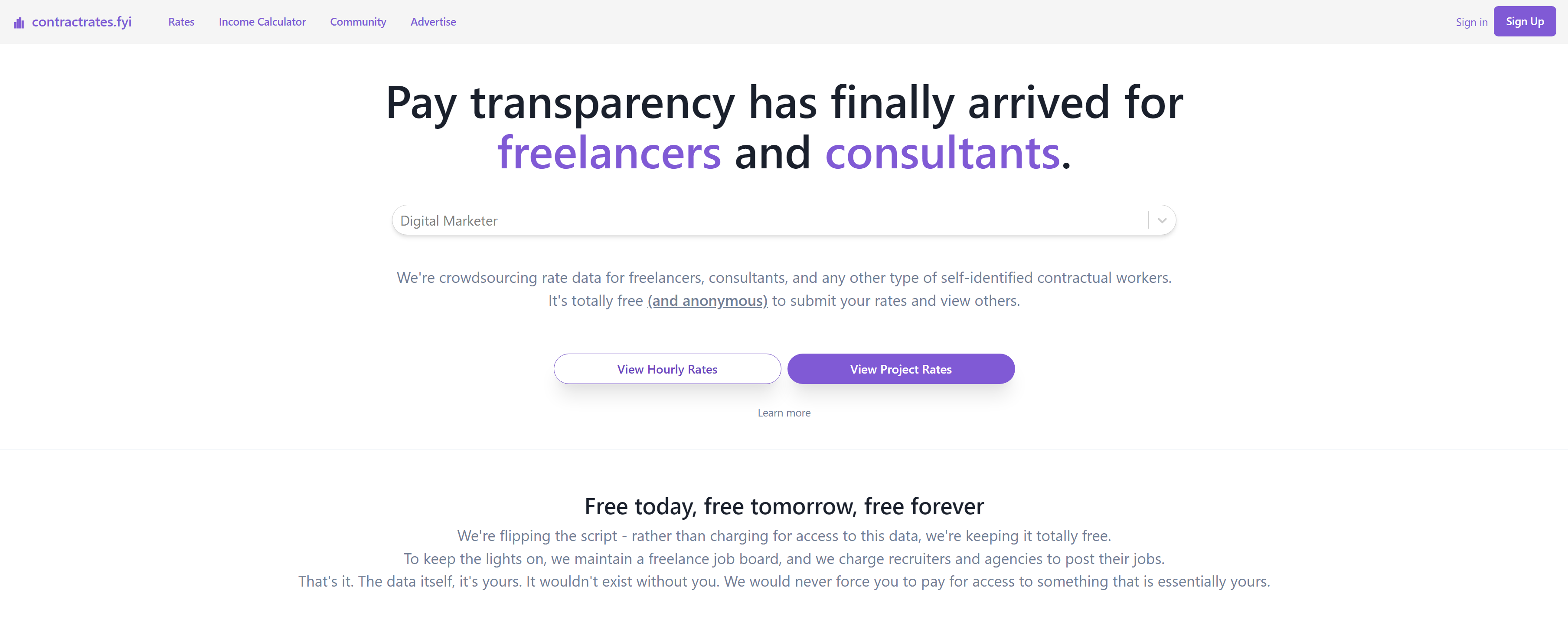
Freelancing Females Rate Database
Unfortunately, according to Fast Company, the gender pay gap is even worse in freelancing, where they found a 48% difference in how much a woman vs. man freelancer charges. (While researching this, I found another useful resource, which you’ll find right below this one.) Fortunately, Freelancing Females has compiled an organized and intuitive rate database so freelancers can see what others are charging and work to close the pay gap.
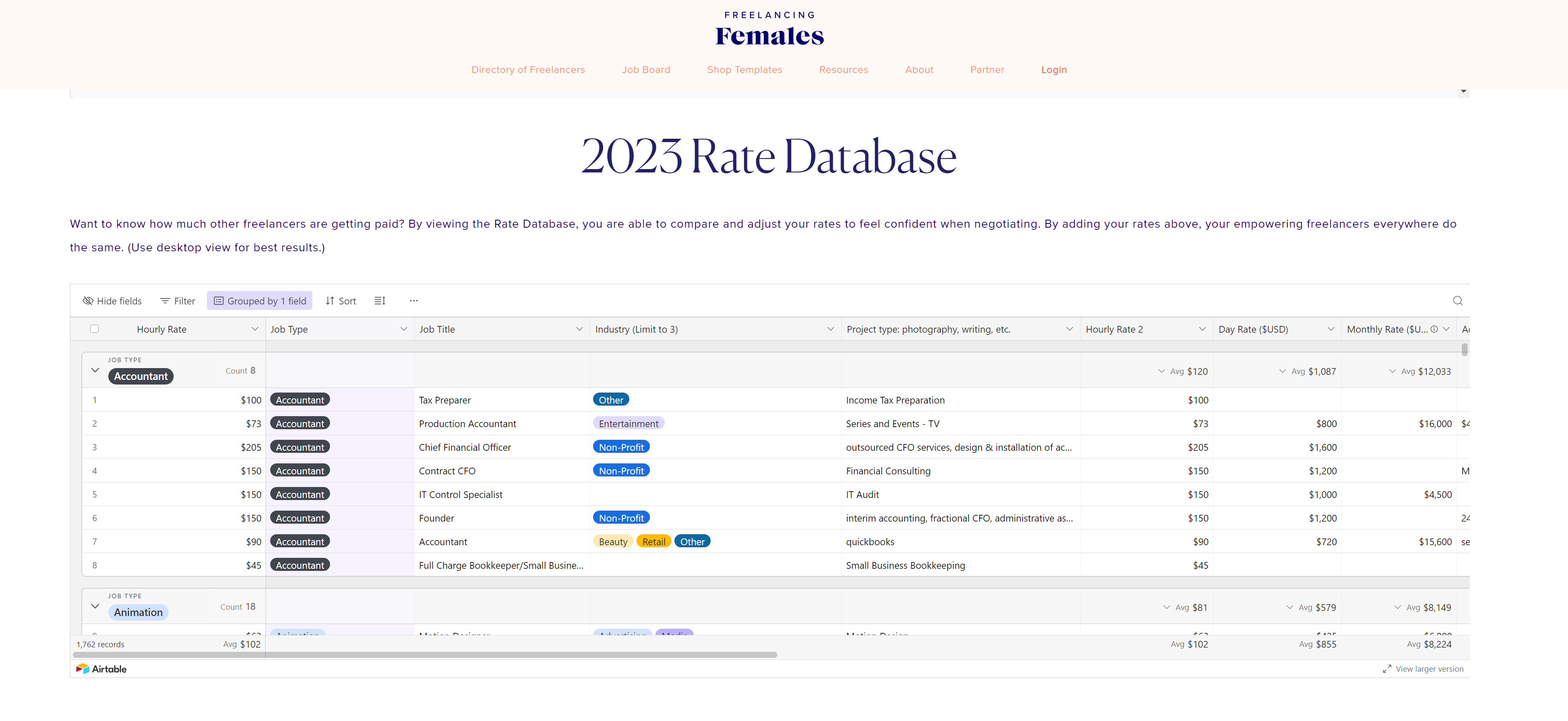
ZenBusiness Freelancer Pay Gap
ZenBusiness scraped freelancer rates for almost 6,000 freelancers who have billed at least 100 hours of work in the past 6 months on Upwork. Here’s what they found about average pay and the pay gap.
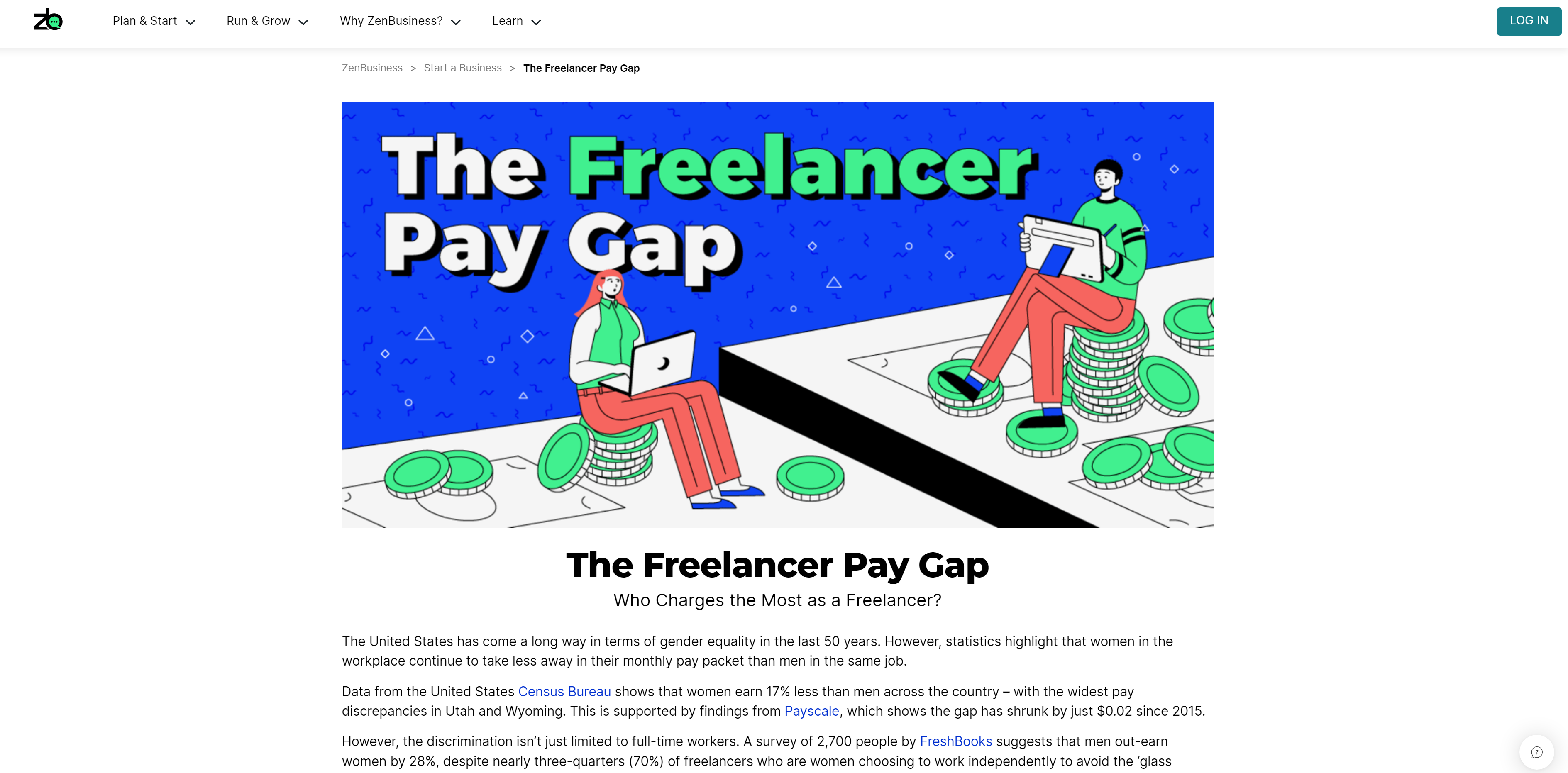
Editorial Freelancers Association Editorial Rates
The Editorial Freelancer’s Association (EFA) has a published list of median editorial rates by industry and role (for example, translation, non-fiction copyediting). They list median rate per hour and word, alongside the median pace of work so you can gauge how long a typical project will take.
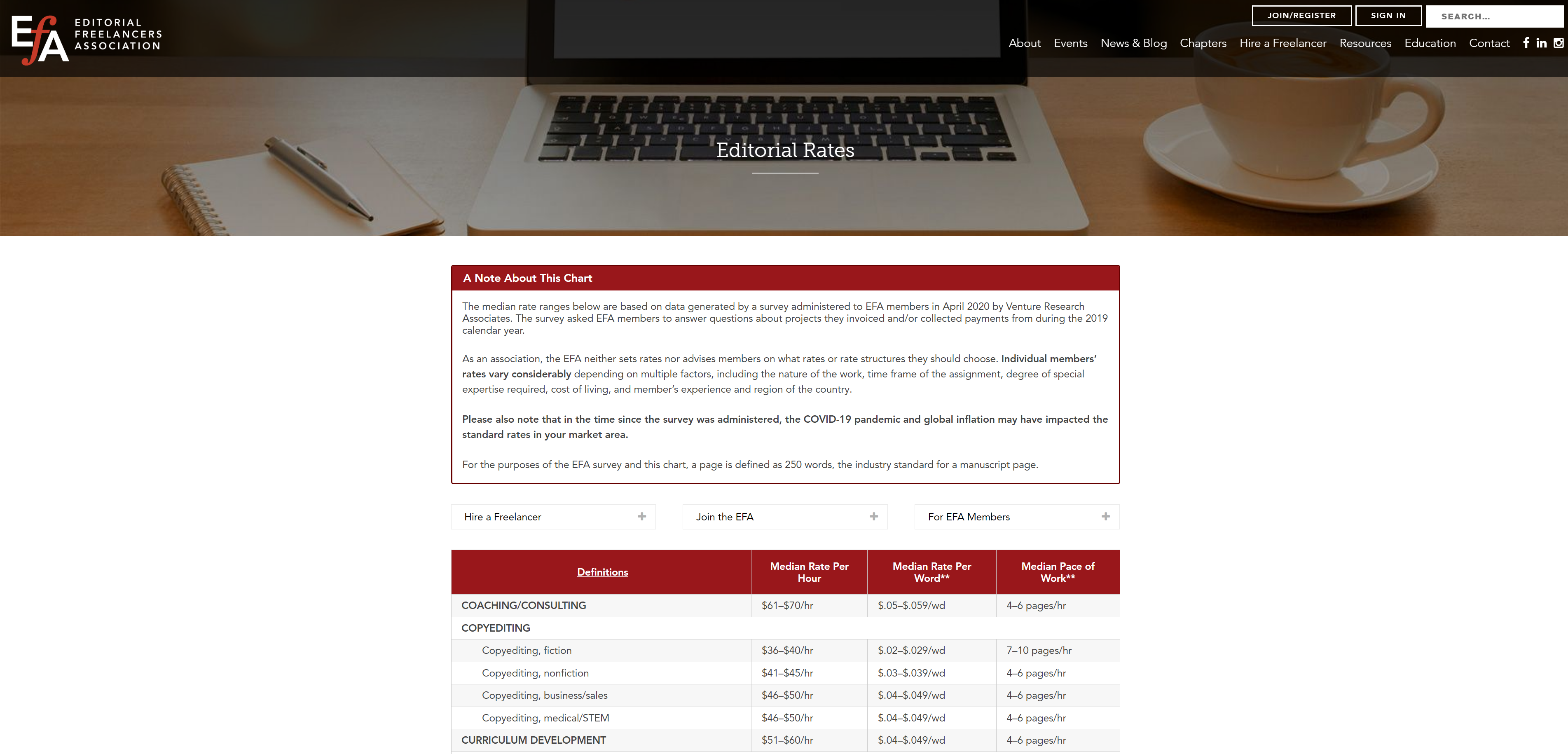
Contently Freelance Rates Database
The Freelance Creative (by Contently) has a rate database collected from a wide range of writers with varying experience. The database shows client, topic, format, word count, fee, and payment method. It also includes a space for notes, so writers can comment on whether they liked or disliked working with a client, and other helpful comments.
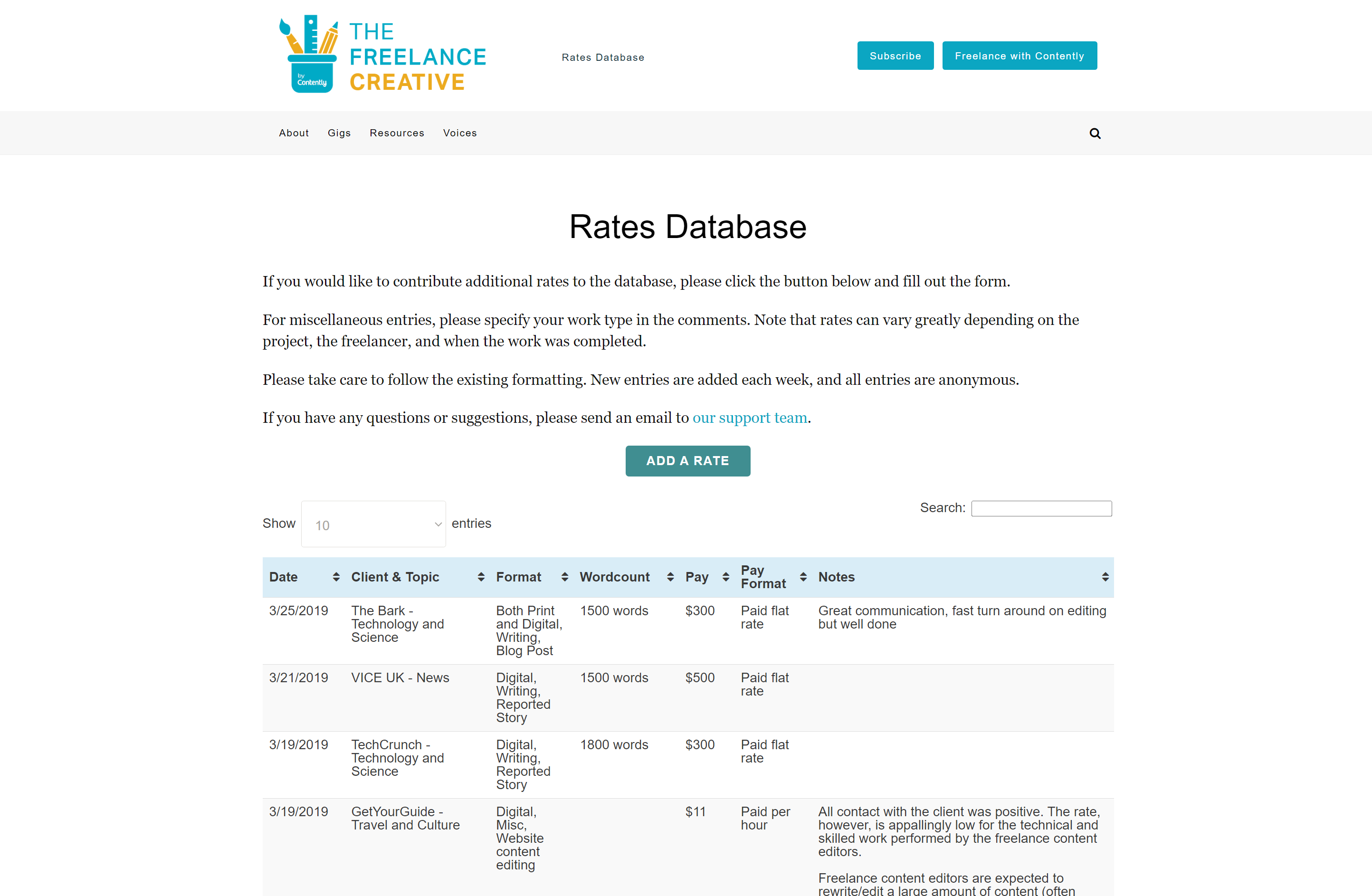
Who Pays Writers?
Who Pays Writers? is a website that compiles writer pay rates by publication. Each entry also includes number of words, type of article, and how much legwork (reporting, interviewing, etc.) was involved. Freelance writers can research potential clients to see if they’ve paid past freelancers more or less, and benchmark pitches and fee proposals.
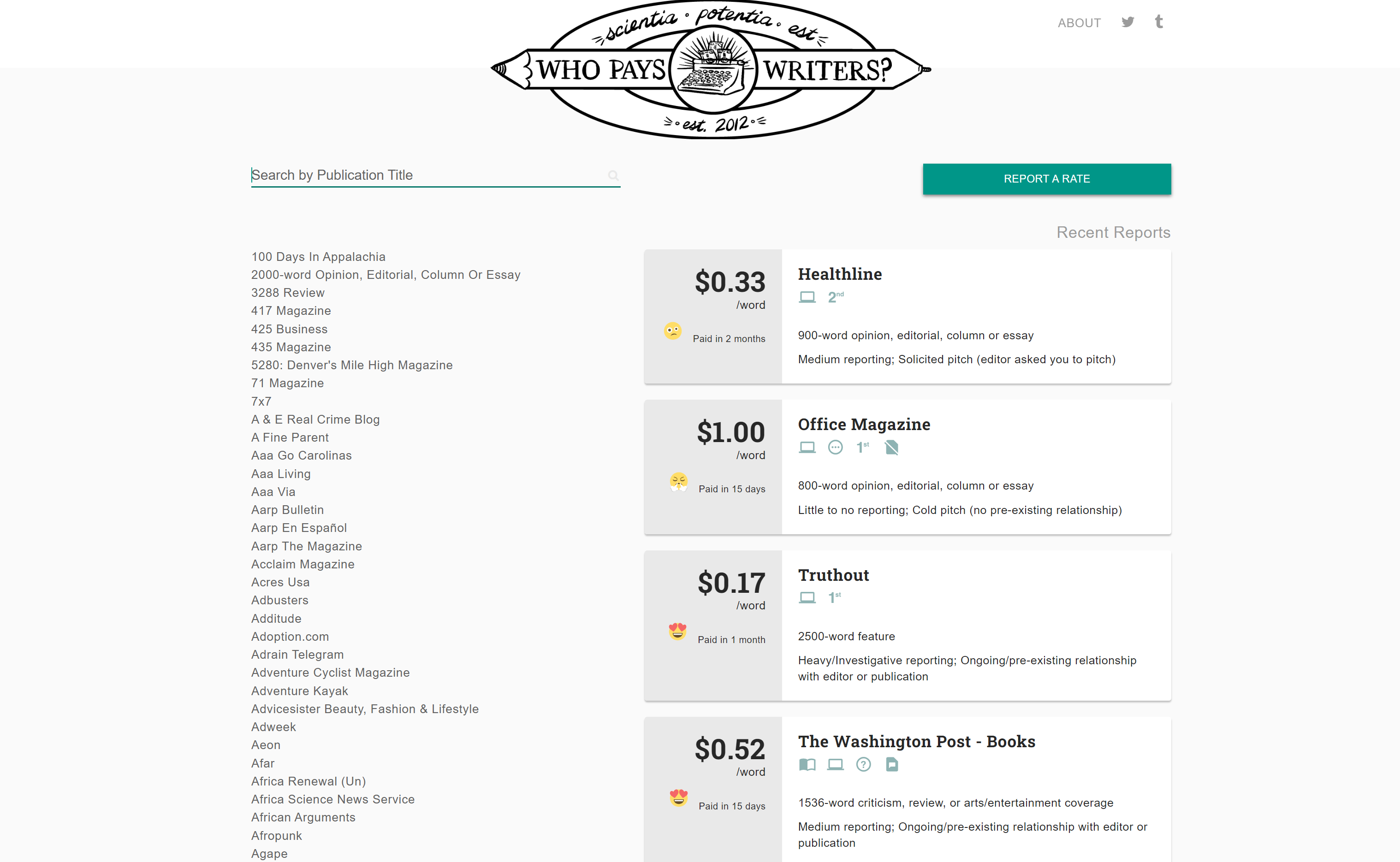
Bonsai Freelance Rates Explorer
This freelance rate database is largely for developers and designers (Bonsai’s target audience). They populate their freelance rates explorer with data their customers input when signing up and creating contracts for clients.
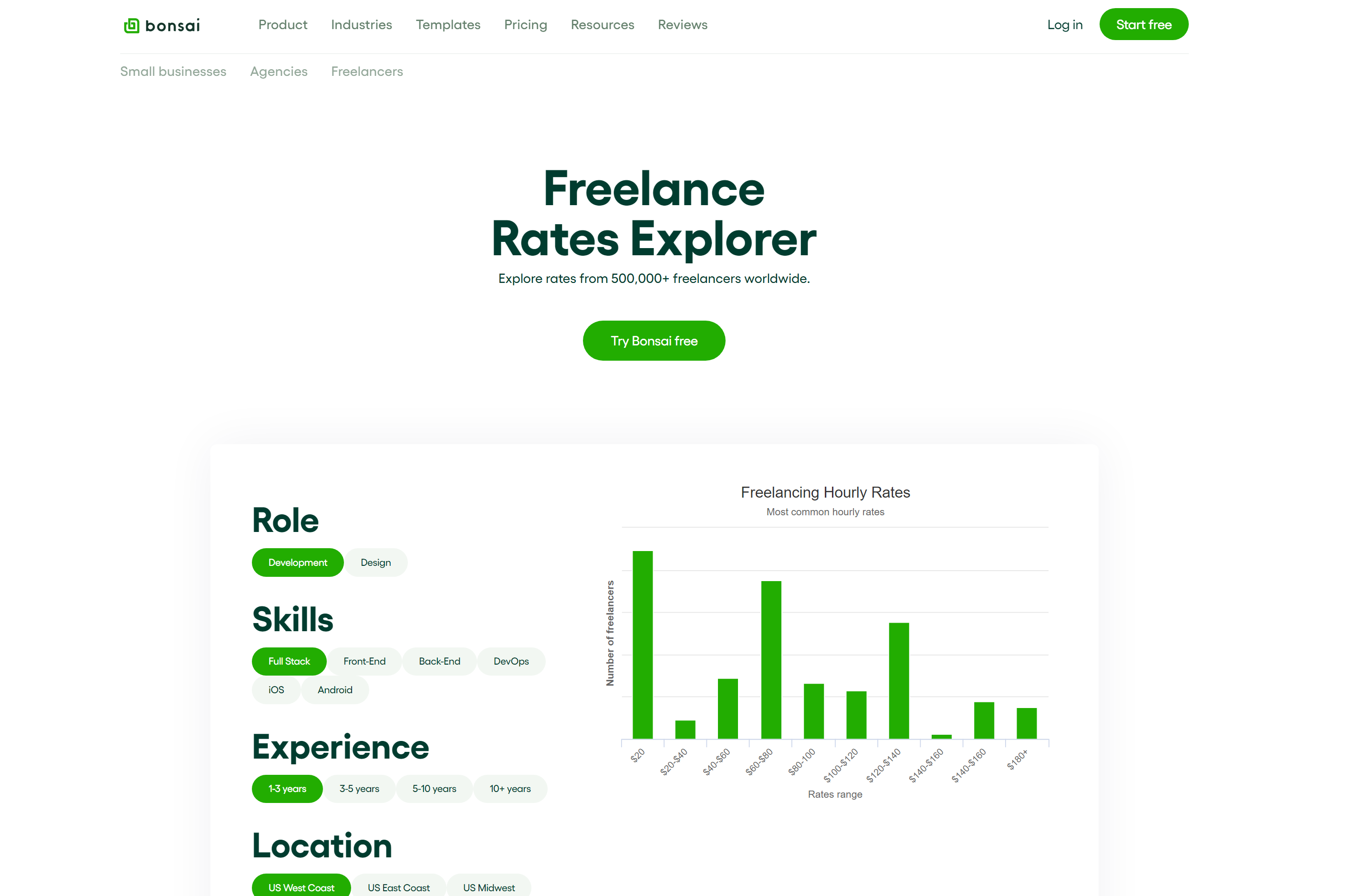
Litebox Info Rate Finder
Litebox Info primarily collects commercial art rates for illustrators. Although the URL includes “2019” in it, their Google Form collecting freelance illustration prices is still active.
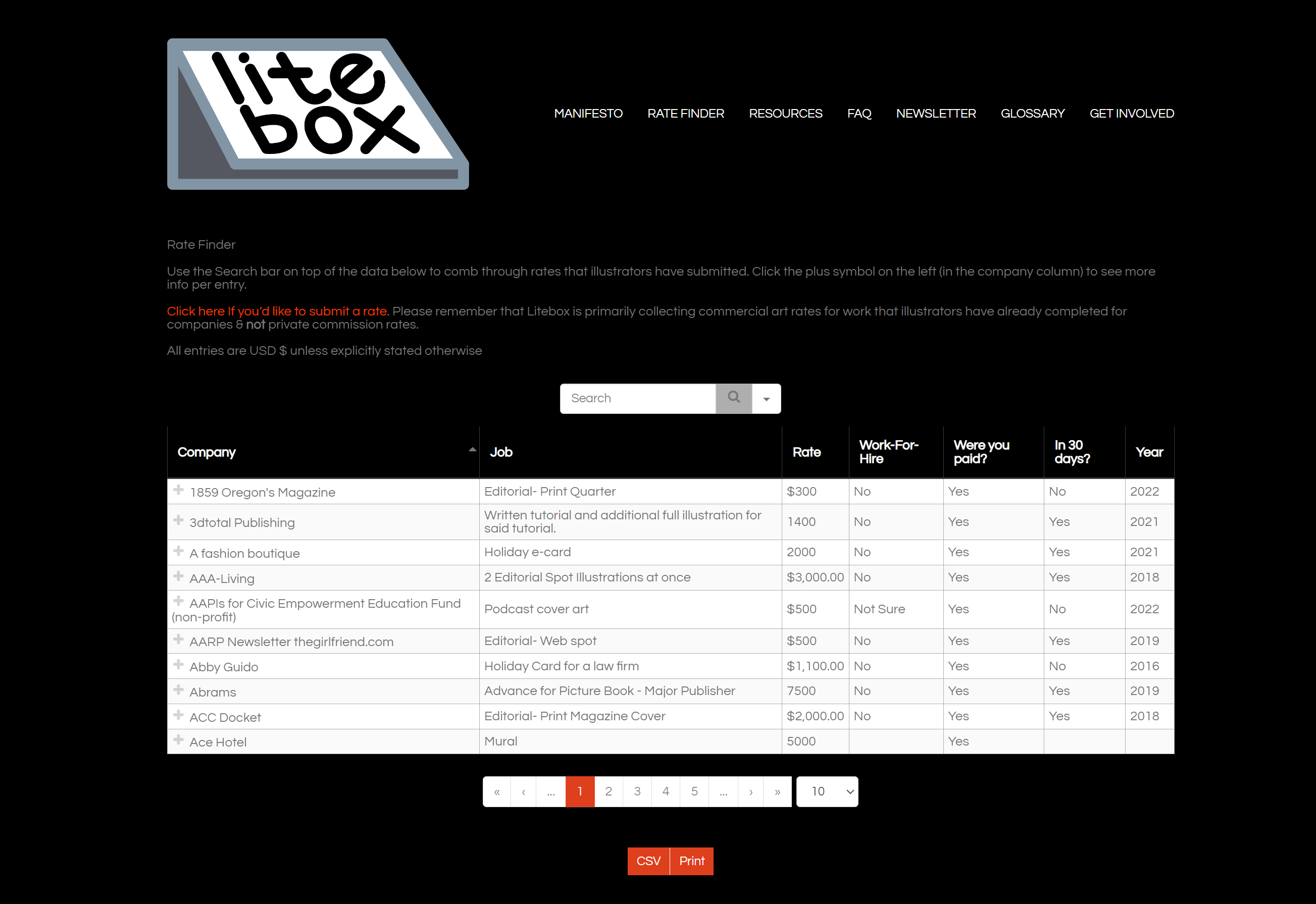
Levels.fyi
This resource shows full-time salaries, which is still useful for those who want to use those numbers to set retainers. Don’t forget to price higher than the salary you want, since you cover your freelance business expenses, taxes, and don’t get full-time employee benefits.
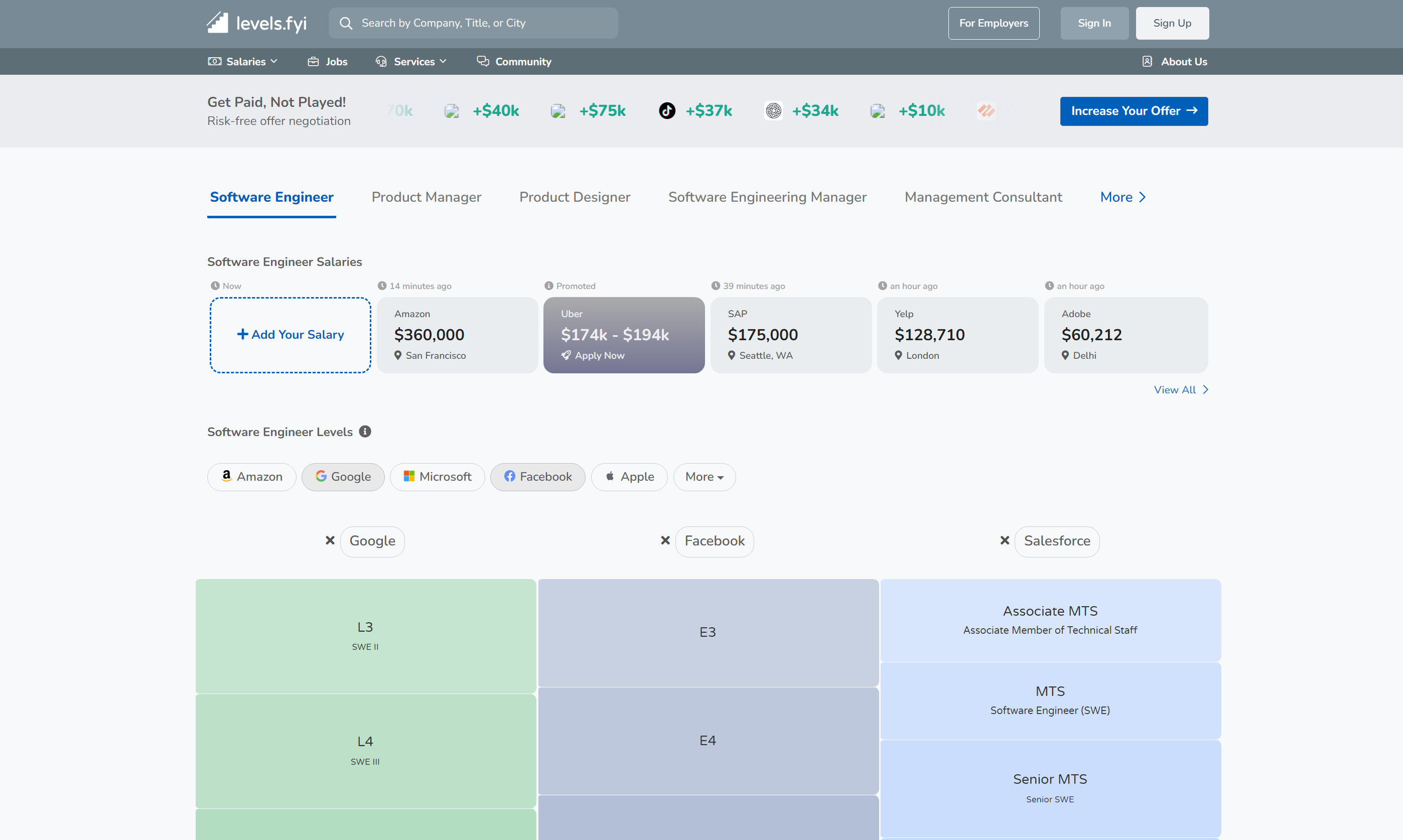
Peak Freelance Freelance Writing Rates Survey
This survey from Peak Freelance digs into how long freelancers have been a-freelancing, what industries they write in, freelance income in 2020, and rates for different types of content.
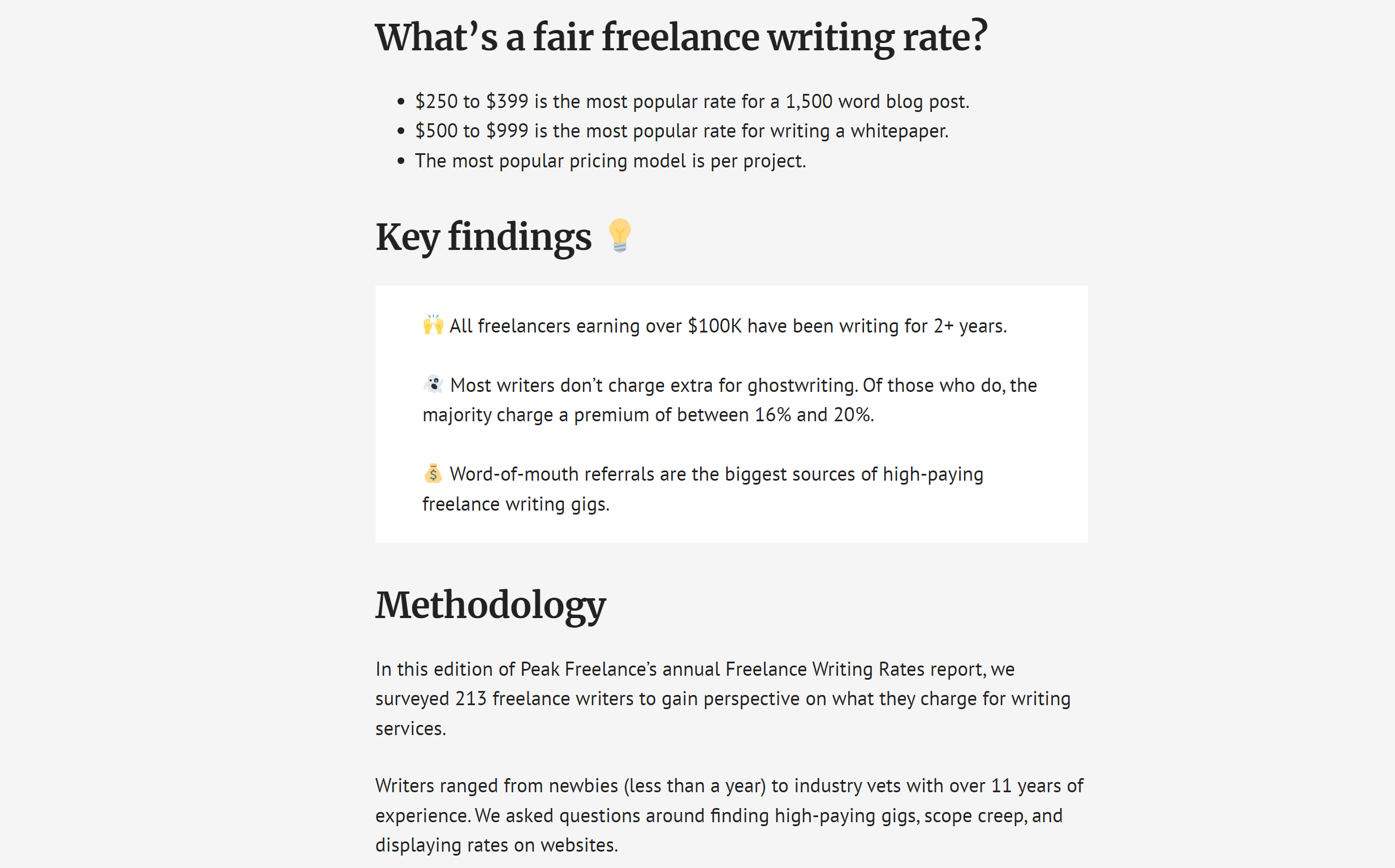
Ashley Cummings freelance writing rates survey
Freelance Writer Ashley Cummings ran a freelancer rate survey that breaks down what freelancers make per project, hour, and word. She splices the data by age, project type, level of education, industry, and more, which makes it helpful to find the rates that someone with your same level of experience is charging.
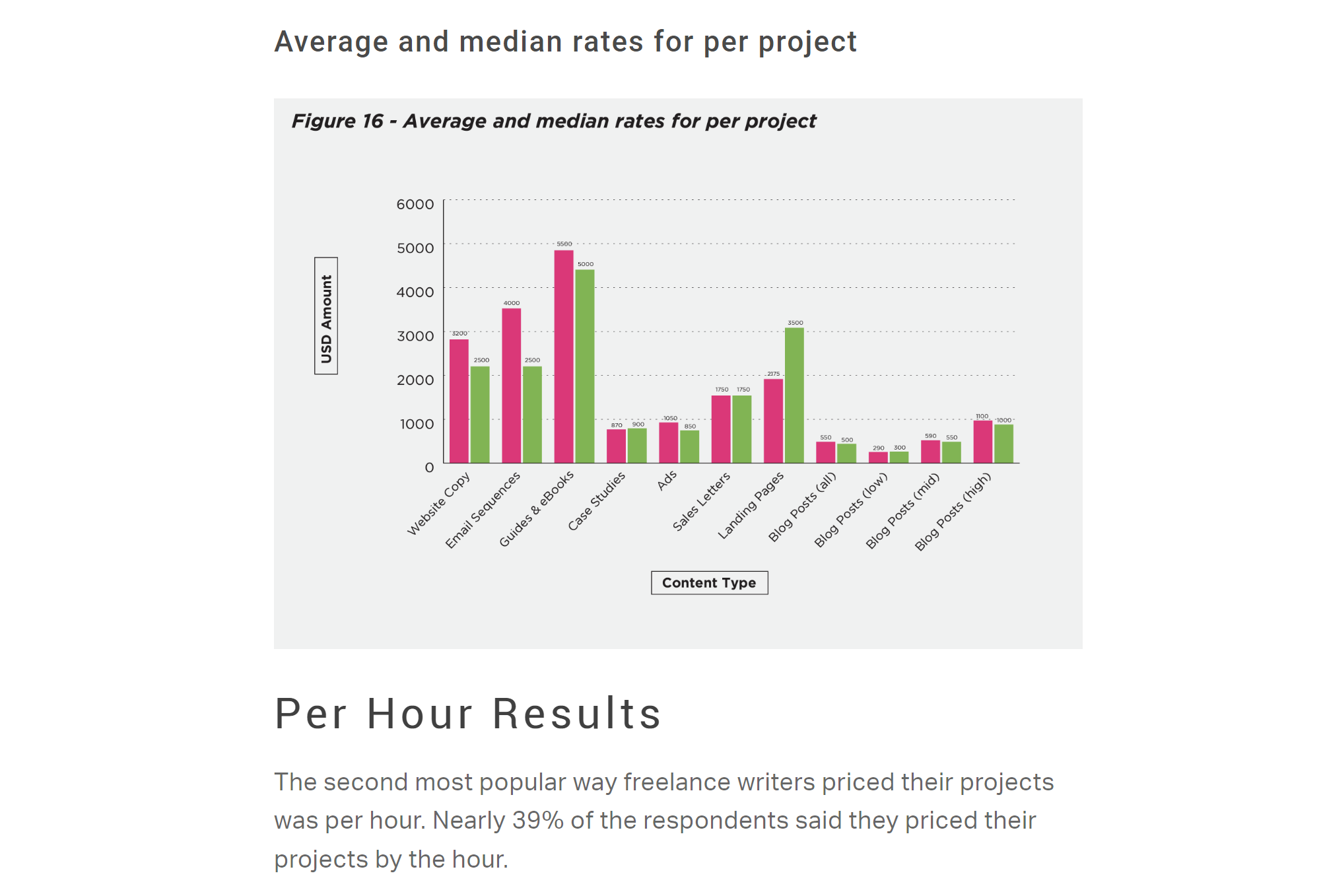
Superpath Content Markting Salary Report
This resource covers both full-time and freelance content marketing rates, and even compares the two. Their report includes average income for full-time and freelance content marketers, and income by business model (B2B, B2C), experience, job title, race and ethnicity, age, country, and more.
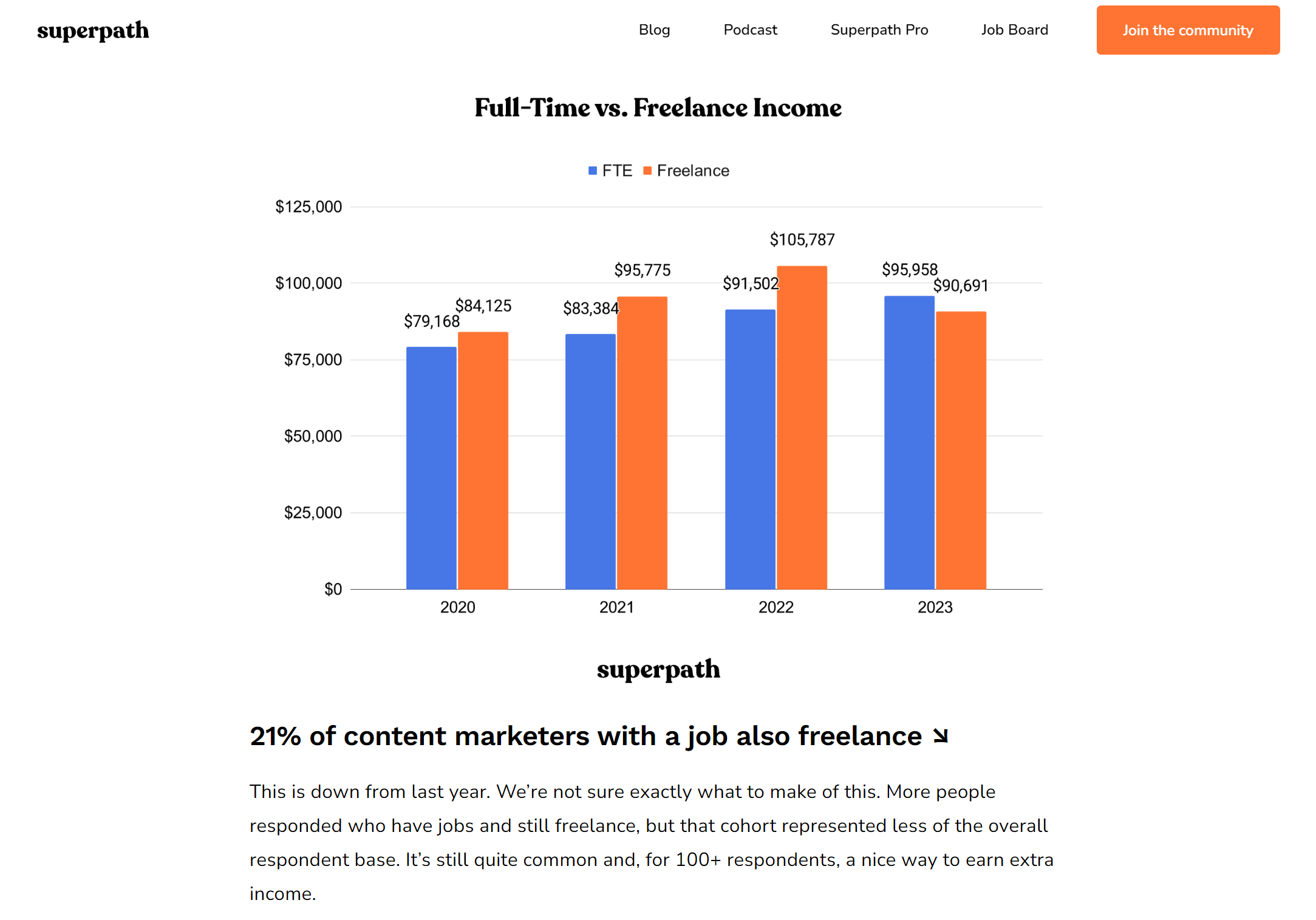
Salary surveys
One paid option is to purchase salary surveys from companies like Aon, Korn Ferry, WTW, and Mercer. Although most of these surveys are designed for businesses to better compensate their employees competitively, it’s useful information for you to understand what companies are paying and how that might translate to your freelance rates.
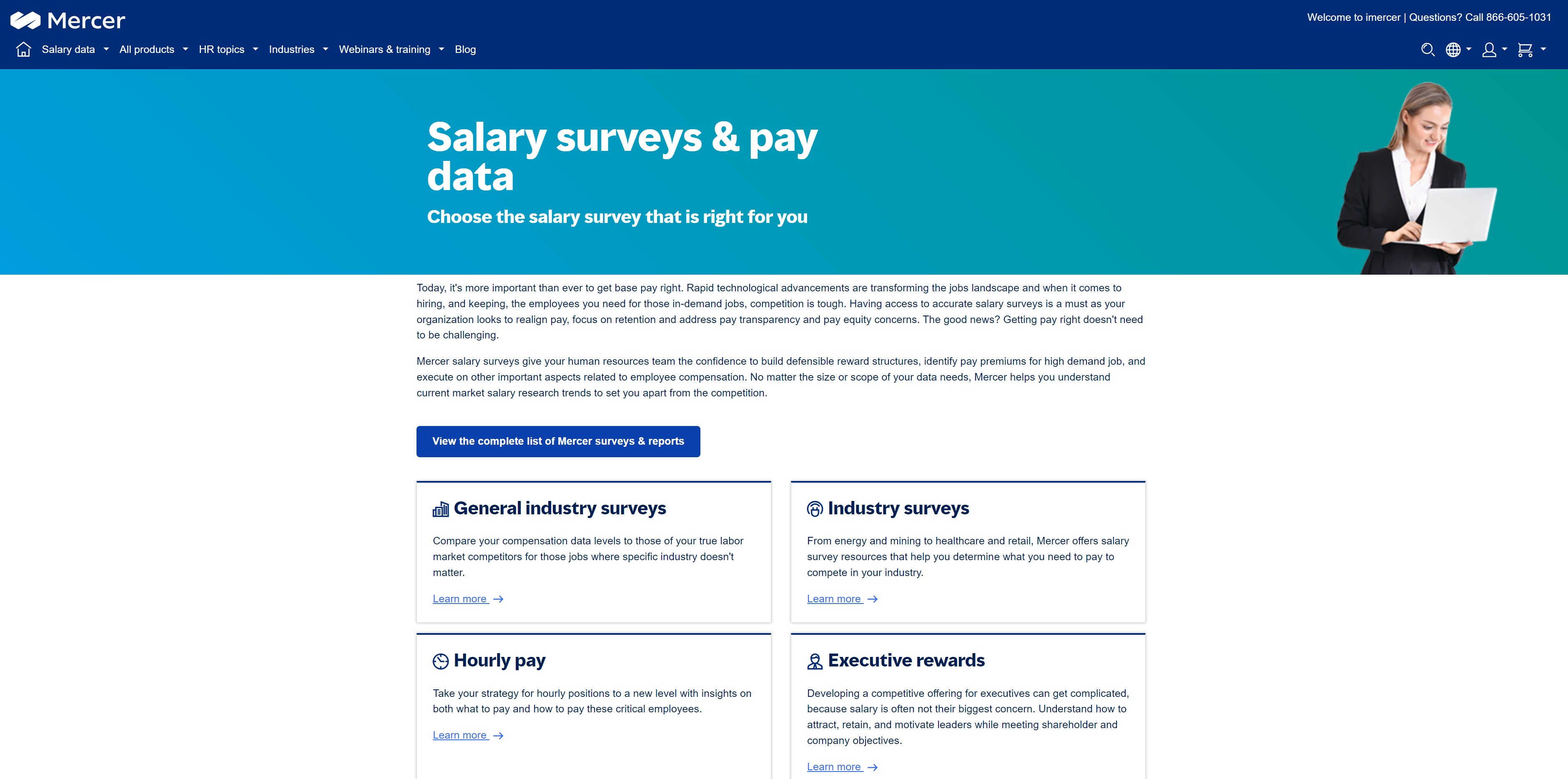
Government statistics
Finally, look at your local government resources when it comes to finding out average wages per role. For example, the U.S. Bureau of Labor Statistics has wage data by area and occupation, and O*NET OnLine allows you to search by job title and see salary averages, lows, and highs by location (you can also switch to either salary or hourly rates).
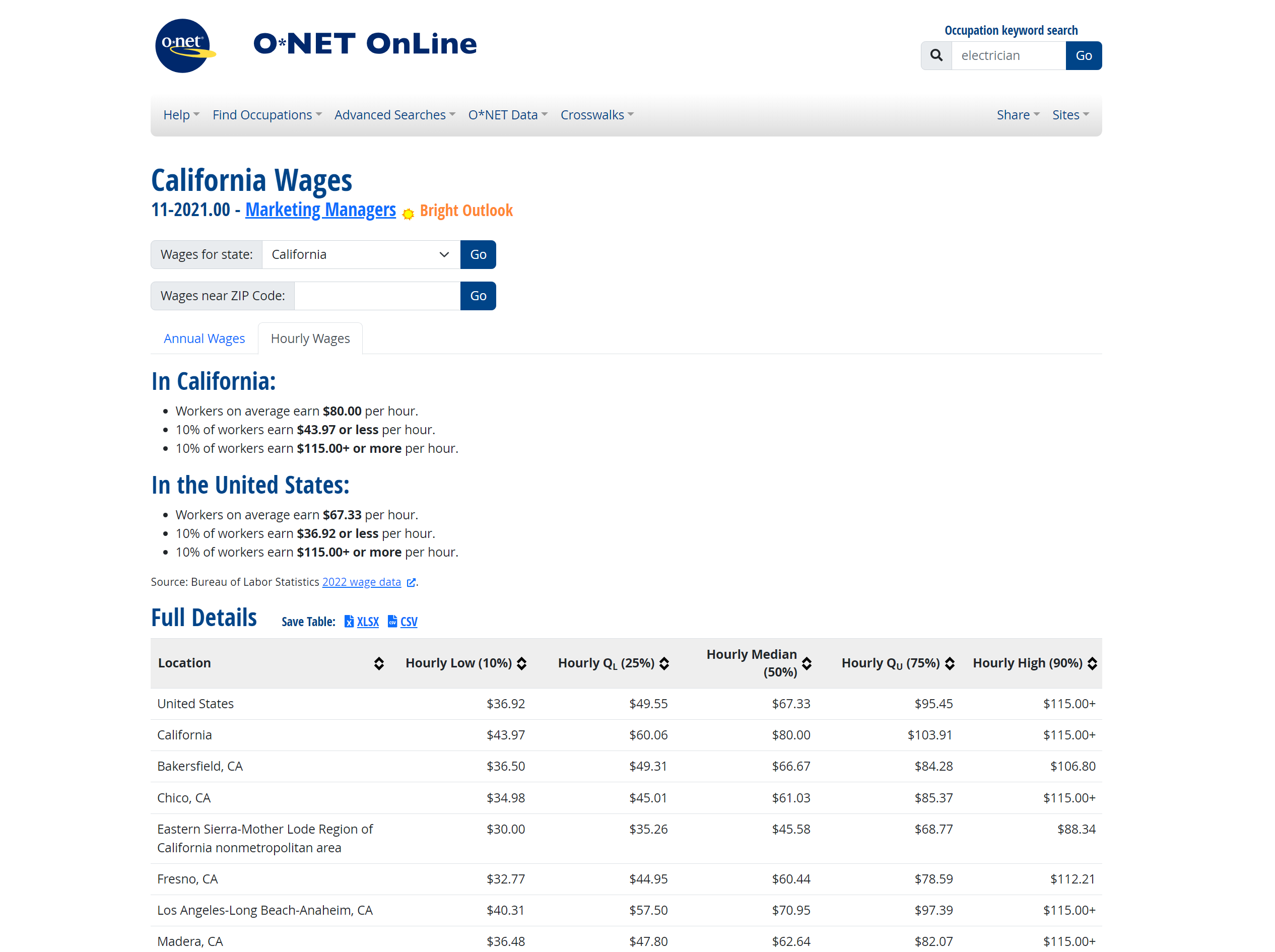
Any databases or research I’ve missed? Let me know and I’ll add it to the resources!
Wrapping up — Set your freelance rates confidently based on your goals and comfort
There’s no right way to set your freelance rates. It’s different for everyone, and many well-paid writers price in different ways.
Test out various ways to price your services and look at what is the most comfortable, lucrative, and enjoyable for you and your work.
Pricing is a necessary part of freelancing and it can unlock better projects, more time, and profits that enable further career development.